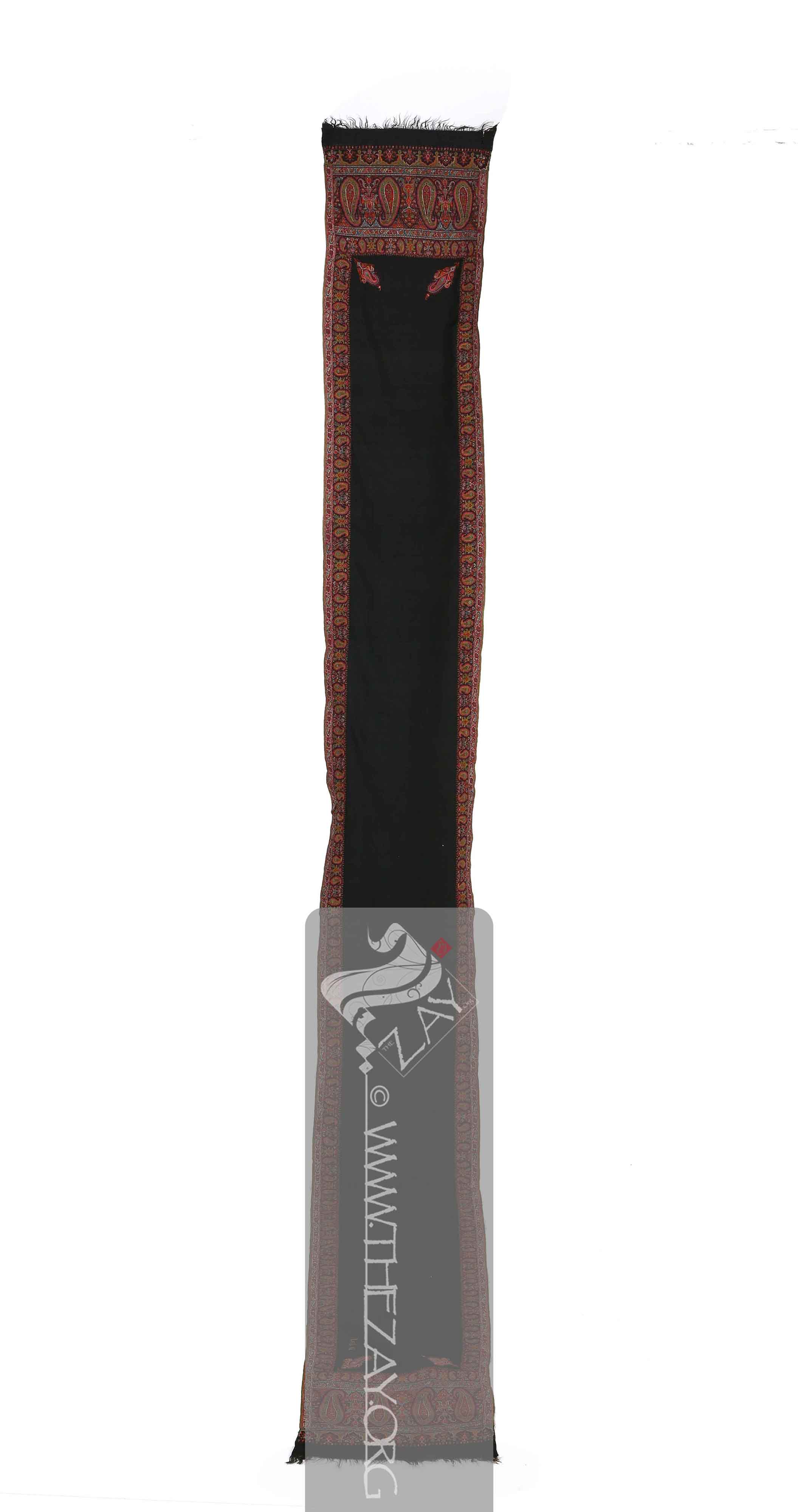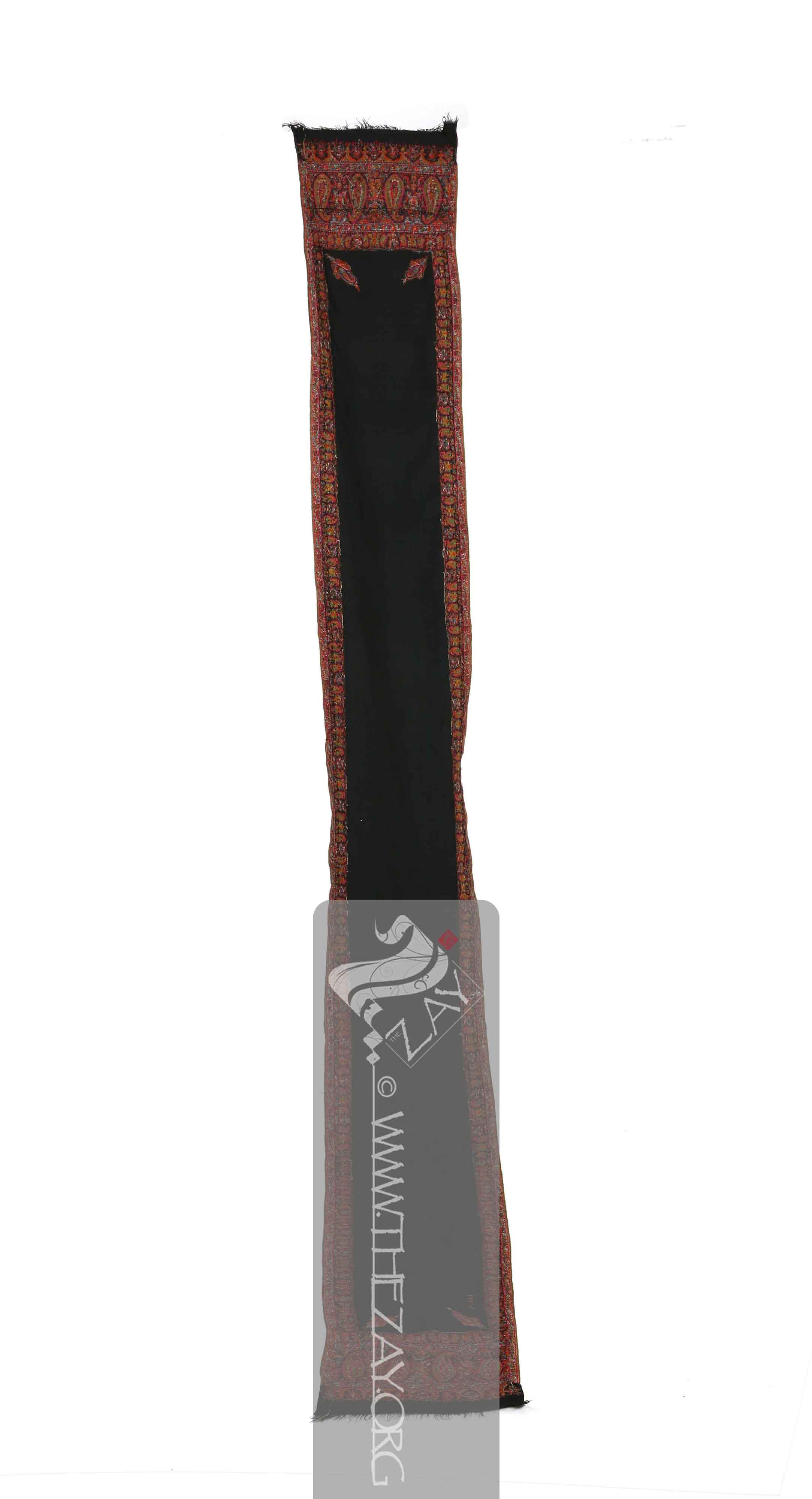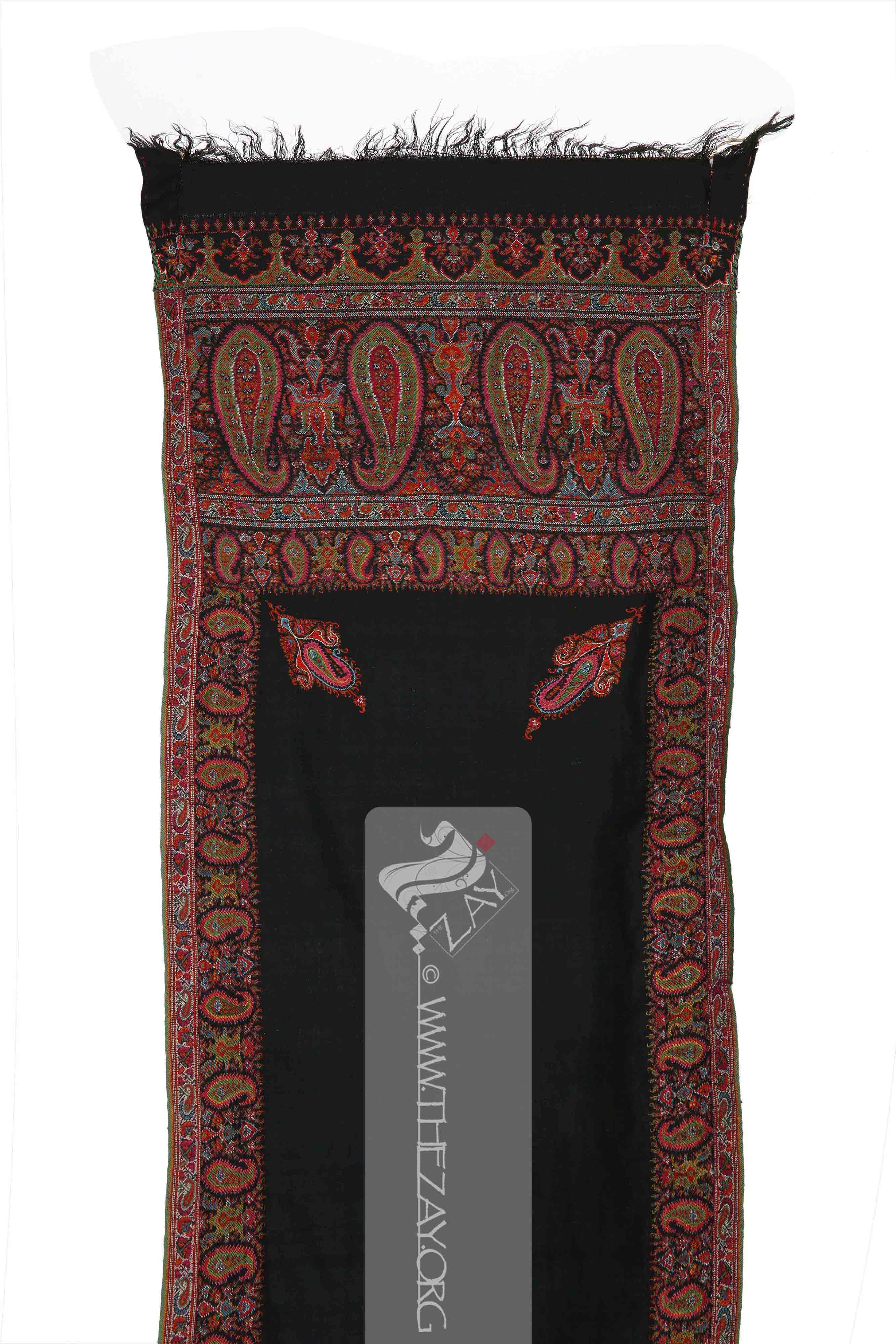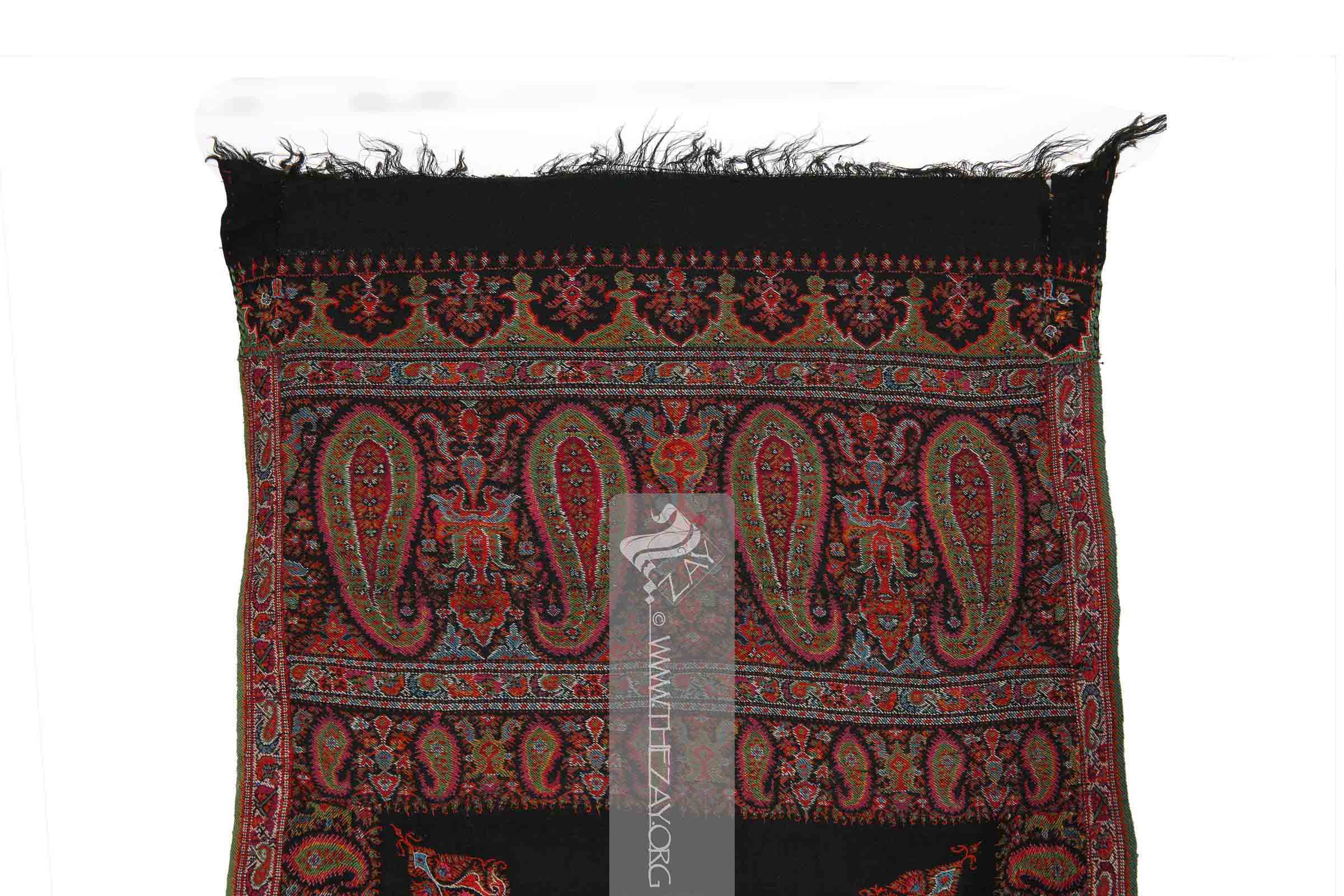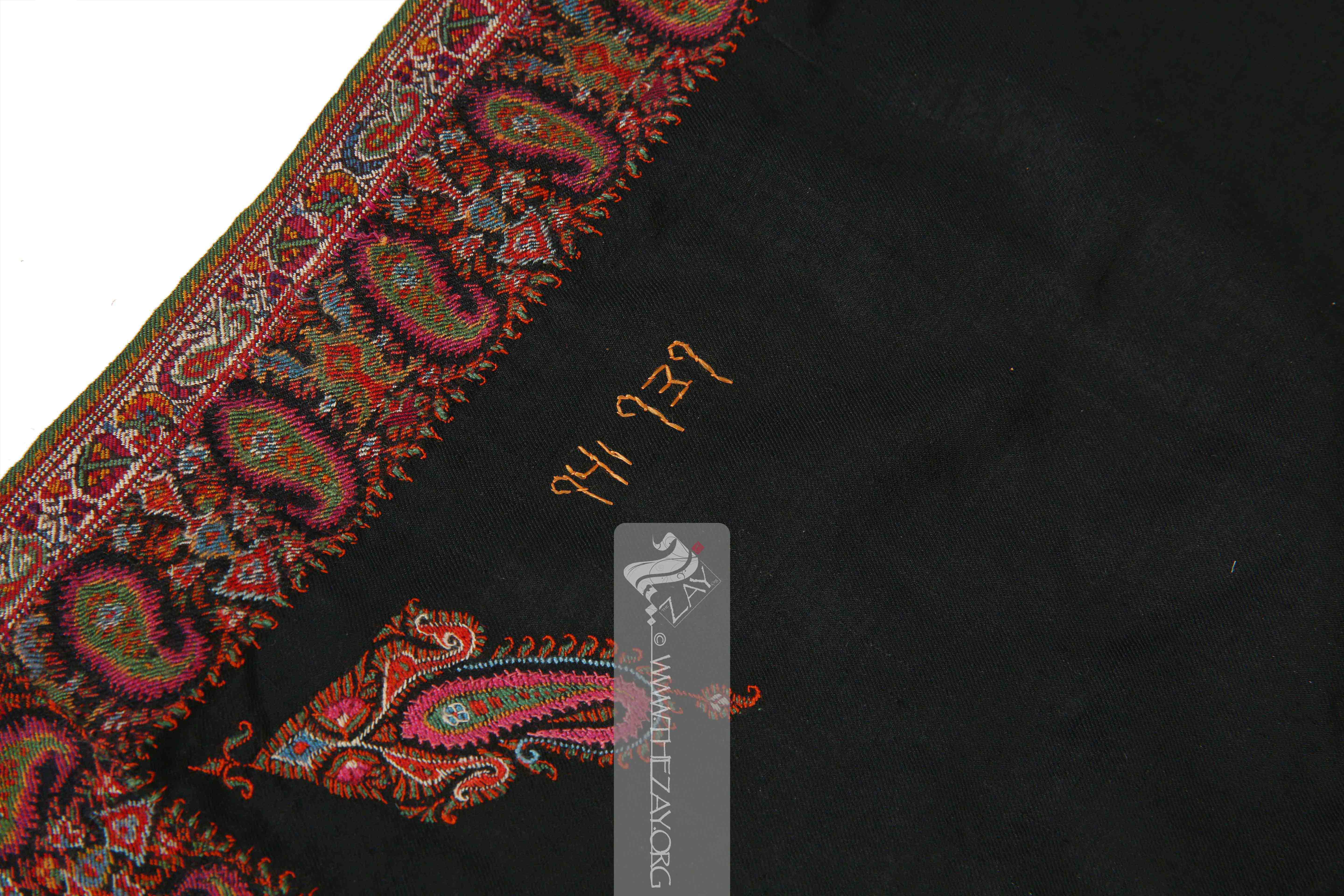Object History This elegant
Kashmiri
Kashmiri: (Hindustani: Kashmir – a region in South Asia), a term used to denote or identify anything related to the region – its people, their language, culture, art and craft, society etc. silk sash or girdle dates back to the late- 19th century and was originally a part of the Dr Joan Coleman Collection. It was first purchased at an auction in Christie’s, London, and later The
Zay
Zay: (Arabic: costume, Pl. azyaā’), a set of clothes in a style typical of a particular country or historical period. Initiative managed to acquire it from Kerry Taylor Auctions in 2020.
Dr Joan Coleman began collecting shawls in 1976 and developed her lifelong passion for collecting. She was a regular at the London salerooms of Christie’s, Sotheby’s, and Phillips – three of the most outstanding auction houses of the period in the world – getting to know the dealers and learning in the process. She acquired vast knowledge and dedicated hours carefully cataloguing her ever-growing collection. She intended to loan her collection to different museums and institutions for the benefit of learning and education. Her collection is one of the largest and the finest private
shawl
Shawl: (Persian: shāl from Hindi: duśālā – Shoulder Mantle), a shawl is a South Asian version of a scarf worn or wrapped loosely over the shoulders and is usually made of wool. collections to have ever graced the world with shawls ranging from Kashmir,
Paisley
Paisley: (Scottish Gaelic, Pàislig: a town in Scotland), often called buta, boteh, amli, or kalgi in the subcontinent and kazuwah in Arabic, is a Persian tear drop motif with a curved end specially in textiles. Its popularity and subsequent local production in 18th century at Paisley are responsible for its nomenclature., Edinburgh, Norwich, France, and Iran.
Object Features This is a rectangular piece of silk handwoven fabric with a black base and a polychrome woven
paisley
Paisley: (Scottish Gaelic, Pàislig: a town in Scotland), often called buta, boteh, amli, or kalgi in the subcontinent and kazuwah in Arabic, is a Persian tear drop motif with a curved end specially in textiles. Its popularity and subsequent local production in 18th century at Paisley are responsible for its nomenclature. and floral motif border running along all the sides and four
paisley
Paisley: (Scottish Gaelic, Pàislig: a town in Scotland), often called buta, boteh, amli, or kalgi in the subcontinent and kazuwah in Arabic, is a Persian tear drop motif with a curved end specially in textiles. Its popularity and subsequent local production in 18th century at Paisley are responsible for its nomenclature. motifs diagonally mirroring each other at the corners. These motifs are hand embroidered in silk (
resham
Rīsham: (Persian: abrīšam – silk yarn), referring to silk threads in the Indian subcontinent and Iran. ) threads. One of the
warp
Warp: One of the two basic components used in weaving which transforms thread or yarns to a piece of fabric. The warp is the set of yarns stretched longitudinally in place on a loom before the weft
Weft: one of the two basic components used in weaving that transforms thread or yarns into a piece of fabric. It is the crosswise thread on a loom that is passed over and under the warp threads. is introduced during the weaving process. ends of the fabric has a broader border and decorative fringes.
The presence of the decorative fringes and the broader border on one end clearly indicates that the fabric was used as a girdle or
cummerbund
Cummerbund: (Anglicized from Hindustani: kamarband
kamarband: (Persian: kamarband – a waistband or sash tied around the waist, synonym: cummerbund), a broad sash worn around the waist by men. In the 17th century, the British Indian Army adopted this style from the Indian sepoys and made it a part of the English lexicon. from Persian: kamarband
kamarband: (Persian: kamarband – a waistband or sash tied around the waist, synonym: cummerbund), a broad sash worn around the waist by men. In the 17th century, the British Indian Army adopted this style from the Indian sepoys and made it a part of the English lexicon. – a waistband or sash tied around the waist), a broad sash worn around the waist by men. In the 17th century the British Indian Army adopted this style from the Indian sepoys and made it a part of the English lexicon. (
patka
: (Sanskrit: paṭṭikā – a ligature or strip of cloth; Pataka – A ribbon or girdle or piece of cloth; Synonym – Patako), a sash or waistband worn by men and tied with their ends hanging down the front or a piece of often square shaped cloth worn underneath a turban in South Asia. ). The inner layer (
tanjir
Tanjīr: (Possibly Persian: zanjir: Chain), a narrow layer of pattern that forms the border and runs above and below the wider layer. ) of the border on the
warp
Warp: One of the two basic components used in weaving which transforms thread or yarns to a piece of fabric. The warp is the set of yarns stretched longitudinally in place on a loom before the weft
Weft: one of the two basic components used in weaving that transforms thread or yarns into a piece of fabric. It is the crosswise thread on a loom that is passed over and under the warp threads. is introduced during the weaving process. end with fringes, has a series of large
paisley
Paisley: (Scottish Gaelic, Pàislig: a town in Scotland), often called buta, boteh, amli, or kalgi in the subcontinent and kazuwah in Arabic, is a Persian tear drop motif with a curved end specially in textiles. Its popularity and subsequent local production in 18th century at Paisley are responsible for its nomenclature. motifs in a set of two facing one another.
This kind of fabric girdle was most commonly used by men and occasionally by women. Sashes like these would be wrapped two or three times around the wearer’s waist and tied with either both their ends hanging or just one end hanging down the front of the wearer while the other end was tucked in. They were usually worn over long robes and were used to display the wearer’s wealth by tucking personal items like daggers, pencases, and other precious objects into the fabric. The concept of the (
patka
: (Sanskrit: paṭṭikā – a ligature or strip of cloth; Pataka – A ribbon or girdle or piece of cloth; Synonym – Patako), a sash or waistband worn by men and tied with their ends hanging down the front or a piece of often square shaped cloth worn underneath a turban in South Asia. ) was exported to Europe through British military in colonial India which was later modified and adapted as a part of tuxedo sets and was named (
cummerbund
Cummerbund: (Anglicized from Hindustani: kamarband
kamarband: (Persian: kamarband – a waistband or sash tied around the waist, synonym: cummerbund), a broad sash worn around the waist by men. In the 17th century, the British Indian Army adopted this style from the Indian sepoys and made it a part of the English lexicon. from Persian: kamarband
kamarband: (Persian: kamarband – a waistband or sash tied around the waist, synonym: cummerbund), a broad sash worn around the waist by men. In the 17th century, the British Indian Army adopted this style from the Indian sepoys and made it a part of the English lexicon. – a waistband or sash tied around the waist), a broad sash worn around the waist by men. In the 17th century the British Indian Army adopted this style from the Indian sepoys and made it a part of the English lexicon. ).
Links: 



